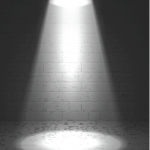So do schoolchildren. For roughly a dozen years, she shared her knowledge several mornings a week with students in the Washington Crossing and Brandywine School Districts, and then taught 21st century medicine in the afternoons.
She says many people forget how their ancestors survived surgeries without anesthesia. “Most of the world has completely forgotten about what it was like to be an active participant in your [own] surgery,” Crawford says.
To help children better understand, she often shares stories that were written in a diary by a Quaker woman during the 18th century. One involved her 5-year-old daughter, who was ill, being bled and had leeches placed near incisions on her hand, leg and stomach.
Because the subject matter often requires a strong stomach, she asks the children to sit on the floor. If they become queasy or lightheaded when she talks about how these tools were used, she says they don’t have far to fall if they faint.
Shared Practices, Clean Streets
Among her favorite possessions is a reprint of a book written in the 1750s by a British physician, Sir John Pringle, called Diseases of the Army. During the American Revolution, she says, a U.S. physician, Dr. Benjamin Rush, applied Dr. Pringle’s medical concepts and techniques. After the war, Dr. Rush republished the book, adding a forward, along with annotations throughout the book about how and when he used Dr. Pringle’s procedures, both on and off the battlefield.
Crawford is also considering authoring a book, but of a different sort, tentatively titled, “So as to Create a Nuisance.” It would focus on sanitation practices in the 18th century.
Years ago, she explains that her husband requested her help in saving a historic building, the Lazaretto, which was the first quarantine hospital in the U.S., built in 1799, in Essington, Pa. While spending 60 hours in the archives of the Philadelphia library researching the building’s history, she stumbled on “a whole lot of other good, gory things,” she says.
Apparently, in the mid- to late-18th century, the Sanitation Committee, which was part of the city’s Board of Health, was trying to clean up the streets of Philadelphia. Its members understood that proper sanitation was essential for the community’s good health.
So the Committee invited people in the community to point fingers at those committing unsanitary acts and then wrote reports about the incidents that always ended with the phrase, “so as to create a nuisance.”


